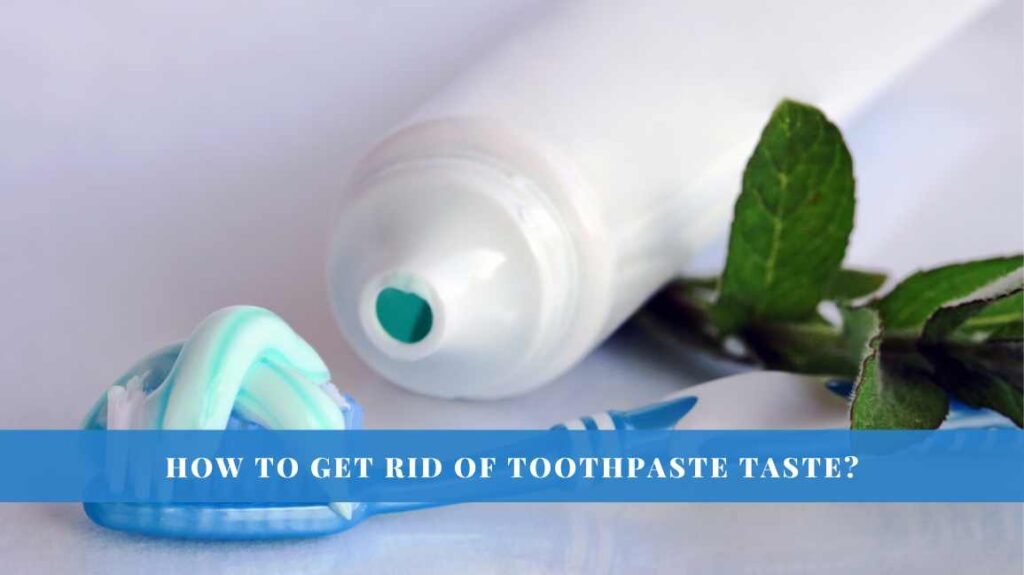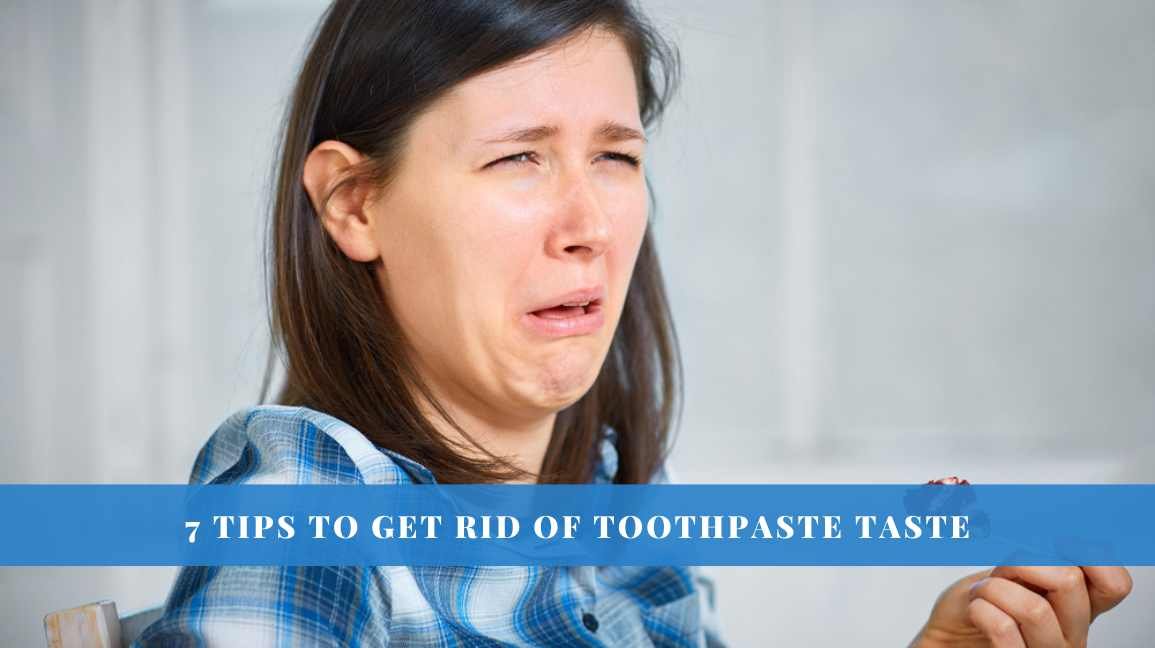We’ve all experienced it – that strong, lingering taste of toothpaste that not only affects how things taste but also impacts the flavor of your morning coffee or breakfast.
Keeping your teeth clean and healthy is really important, but you don’t have to put up with the lingering taste of toothpaste.
In this article, we will explore 7 effective methods to remove the residual taste of toothpaste from your mouth. This will help you enjoy your morning drinks and meals without any unpleasant flavors. Each tip is easy to implement and can significantly enhance your overall oral hygiene experience.
What affects your taste buds after brushing?
According to a research study published in the Journal of Food Science, toothpaste can temporarily change your taste buds due to one of its major ingredients – sodium lauryl sulfate (SLS).
SLS is a surfactant that creates foam and disperses the toothpaste throughout your mouth. SLS also destroys phospholipids in our mouths, which stop us from tasting bitterness. It reduces our ability to taste sweetness and makes bitterness more noticeable, so food and drinks can taste different after brushing. [1].
For those who would like to avoid this effect, there are some toothpaste brands on the market that do not contain SLS. Studies found that using toothpaste without this ingredient may also result in less irritation for those with sensitive mouths.
How to get rid of toothpaste taste?

Here are 7 easy and effective methods to banish the taste of toothpaste from your mouth:
1. Eating a small piece of dark chocolate
Believe it or not, dark chocolate can neutralize the strong taste of toothpaste in your mouth.
Dark chocolate contains a compound called theobromine, which has a unique ability to suppress bitter flavors and enhance sweet ones. After brushing, eat a small piece of dark chocolate to balance out the unpleasant taste left by your toothpaste.
2. Rinse thoroughly
After brushing, rinsing your mouth well with water can help eliminate the lasting taste of toothpaste. Make sure to swish water around your entire mouth, reaching every corner – from the back of your throat to the inside of your cheeks.
This will ensure any residual toothpaste is swept away. If regular water rinsing isn’t enough, consider using a mouthwash. Remember, it’s not recommended to rinse immediately after brushing as that can wash away the fluoride from your toothpaste, which is essential for tooth protection.
Instead, wait for a few minutes before you rinse. According to ADA, it’s best to spit out toothpaste after brushing, then avoid eating, drinking, or rinsing for 30 minutes.
3. Use a Non-Alcoholic mouthwash
Using a non-alcoholic mouthwash after brushing can be another effective way to get rid of the toothpaste taste. Mouthwashes not only refresh your breath but can also neutralize the residual taste of toothpaste.
Non-alcoholic mouthwashes are recommended as they can provide a thorough rinse without causing dryness in the mouth.
As we said earlier, wait for at least 30 minutes after brushing before using mouthwash, as it can wash away the fluoride from your toothpaste.
4. Brush your tongue
Did you know that your tongue can hold a lot of bacteria that can make your toothpaste taste stay longer? Brushing your tongue can help get rid of this taste.
Start at the back of your tongue and work forward, brushing in gentle, short strokes. Alternatively, you can use a tongue scraper, specially designed to clean the coating on the tongue’s surface.
According to the ADA, adding tongue cleaning to your oral hygiene routine can help control bad breath, reduce bacteria, and potentially improve your sense of taste. Do this after brushing your teeth, and remember to rinse after.
Also Read: Sensodyne vs Colgate Sensitive: Which Is The Best Toothpaste?
5. Chew sugar-free gum
Chewing sugar-free gum after brushing your teeth can be another effective strategy to eliminate that lingering toothpaste taste. The act of chewing prompts the flow of saliva, which helps to wash away any remaining toothpaste flavor.
Plus, many sugar-free gums contain xylitol, a natural sweetener that not only improves the gum’s taste but also has antibacterial properties that help in maintaining oral health.
According to a study published in the Journal of Oral & Maxillofacial Research, xylitol can actually help prevent cavities by reducing bacteria growth in your mouth.
6. Wait before eating or drinking
Contrary to what people commonly think, it’s not a good idea to eat or drink right after brushing your teeth. This is because the fluoride in your toothpaste, which helps prevent cavities and tooth decay, needs time to be absorbed into your tooth enamel.
According to the ADA, it’s recommended to wait at least 30 minutes after brushing before you start eating or drinking.
Eating or drinking, especially acidic or sugary foods, increases the risk of tooth decay. If we consume food or beverages too soon after brushing, we risk washing away the protective fluoride before it’s had a chance to work its magic.
7. Practice good oral hygiene
Taking care of your teeth is not only important for having fresh breath and a nice smile, but it also affects our overall health.
To keep your mouth healthy, make sure to brush your teeth 2 times a day using toothpaste with fluoride, floss every day, eat a nutritious diet, and visit your dentist regularly.
The American Dental Association (ADA) suggests visiting the dentist at least once a year for a complete dental exam and professional cleaning.
Regular dental check-ups can help prevent oral problems or detect them early when they are most treatable.
Keep in mind that oral health is closely linked to overall health; conditions like diabetes, heart disease, and certain cancers have been linked with poor oral health.
Also Read: Crest vs Sensodyne: Which Toothpaste Should You Choose?
How long does it take for the toothpaste taste to go away?
The minty flavor of toothpaste usually goes away within 10 to 15 minutes after brushing, depending on the kind of toothpaste you use and your mouth’s unique conditions.
However, the sensation might last longer if the toothpaste contains potent flavors or strong ingredients. It’s essential to note that every individual’s experience might vary due to differences in personal taste, salivary flow rate, and oral hygiene practices.
We suggest keeping up with a regular oral care routine, which means brushing your teeth twice a day and flossing. This will help you maintain good oral health and get rid of any unpleasant toothpaste taste.
Also Read: Can You Put Vicks On Your Tooth? Facts of Vicks
How to get toothpaste taste out of clothes?
Sometimes, you might accidentally get toothpaste on your clothes while rushing through your morning routine. Even though it may seem minor, toothpaste can leave visible stains on fabrics if not handled properly. Here’s a simple guide to effectively remove toothpaste stains from your clothes:
1. Remove Excess Toothpaste
As soon as you notice the toothpaste stain on your clothes, scrape off any excess toothpaste gently using a blunt tool such as a spoon. Be careful not to rub or smear it into the fabric, as this could cause the stain to settle in deeper.
2. Cold Water Rinse
Rinse the stained area thoroughly under cold running water. Using cold water is important here because hot or warm water can make the stain set deeper into the fabric. Rinse from the back of the stain to help remove it from the fabric.
3. Apply Stain Remover
If the toothpaste stain persists even after rinsing, use a stain remover to treat the stained area. Apply a small amount of the stain remover onto the stain, following the instructions provided on the product packaging.
Before using any stain remover, make sure to check the label on the garment for instructions. Different fabrics may react differently to certain chemicals. To be safe, always test the stain remover on a small, hidden area of the fabric first.
4. Wash Normally
After pre-treating the stain, wash the garment as you usually would, following the care instructions on the fabric label. If the stain is still visible after washing, repeat the stain removal process before drying.
Don’t forget, it’s really important to take care of stains right away for the best outcome. The longer you wait, the harder it can be to get rid of them.
This method is great for removing toothpaste stains from your clothes. But remember, always test any stain remover on a hidden part of the fabric to make sure it won’t affect the color.
Conclusion
In conclusion, maintaining good oral hygiene and dealing with the aftertaste of toothpaste doesn’t have to be a struggle. By adopting simple strategies like rinsing, chewing sugar-free gum, and waiting a while before eating or drinking, you can effectively eliminate any lingering toothpaste taste.
Plus, dealing with toothpaste stains on clothing is also manageable with quick action and the right methods. Remember, the key is consistency in maintaining oral hygiene habits and immediate response to any accidental stains.
FAQ
Q: Can I use any type of chocolate to get rid of the toothpaste taste?
No, it’s not recommended to use any type of chocolate to get rid of the toothpaste taste. Consuming chocolate, especially those high in sugar, right after brushing can negate the effects of brushing and increase the risk of tooth decay. If you need something to neutralize the toothpaste taste, try rinsing with water or chewing sugar-free gum.
How long should I wait before eating or drinking after brushing my teeth?
It’s recommended to wait at least 30 minutes after brushing before eating or drinking. This helps to ensure the fluoride in your toothpaste has enough time to be absorbed into your tooth enamel, providing maximum cavity protection.
Are there specific mouthwashes that are more effective in eliminating the toothpaste taste?
Yes, there are specific mouthwashes that can help eliminate the toothpaste taste. Mouthwashes that are mint-flavored or contain xylitol can help neutralize the toothpaste taste. However, it’s important to remember that mouthwash should not be used immediately after brushing as it can wash away the fluoride from the toothpaste which aids in cavity protection.

Hello Friends!
My name is Ahmad, reading books and gaining knowledge about Health, skin and their conditions is my passion and I am here to share my knowledge and experience with you. I hope it’s very helpful for you.
Thank you very much.
